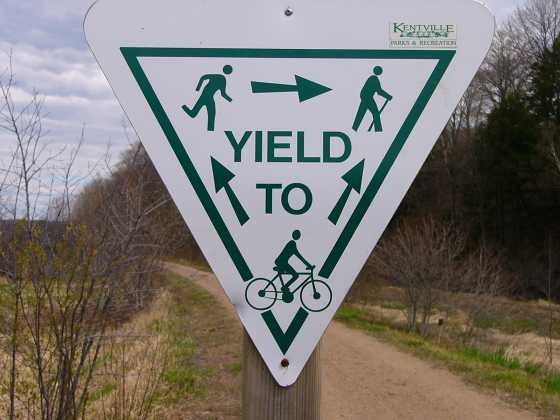
For the second time in less than a year, a pedestrian has been killed by a cyclist in San Francisco. On July 15, 2011, a cyclist ran a red light and stuck a 68-year-old woman at the intersection of Mission Street and The Embarcadero. The cyclist, Randolph Ang, was charged with vehicular manslaughter.
After pleading guilty last month, Ang was sentenced to three years of probation, as well as 500 hours of community service. He was also ordered to pay restitution to the pedestrian’s family.
Last week, another bicyclist-pedestrian crash occurred in San Francisco’s Castro District. The cyclist, Chris Bucchere, was riding downhill into an intersection, possibly against a red light (the cyclist says it was yellow). He plowed into a crowd of pedestrians, striking a 71-year-old man who later died.
What’s particularly disturbing about the second accident, is that immediately afterwards, the cyclist chose to discuss the accident on an online forum, the Mission Cycling AM Riders Google group. In this post (which is no longer viewable) he spoke about his helmet, and how it had saved his life:
“[my helmet] died in heroic fashion today as my head slammed into the tarmac…. May she die knowing that because she committed the ultimate sacrifice, her rider can live on and ride on. Can I get an amen? Amen.”
Although the pedestrian had not died at the time of his post, his emphasis on the helmet, rather than the people involved in the accident, shows a lack of understanding of the severity of the situation. It may also reflect a certain common trait among careless cyclists of focusing on themselves, rather than other road users.
Supposedly, the post read: “I couldn’t see a line through the crowd and I couldn’t stop, so I laid it down and just plowed through the crowded crosswalk in the least-populated place I could find.”
His inability to stop could have been due to either riding a brakeless fixie or traveling at excessive speed. In either case, he was not prepared to yield to pedestrians, as he was required to do, by law.
When riding in a city, no cyclist should be riding so fast that he or she can’t stop in time to avoid hitting something directly in front of the bicycle. The steep San Francisco hills are no excuse. The cyclist should have been in control of his bike.
As if the first faux pas weren’t enough, it was reported that the cyclist included the following in his comments:
“I remember seeing a RIVER of blood on the asphalt, but it wasn’t mine. I really hope he ends up OK.”
It really is strange to see this cyclist constantly referring to himself. Reporting an observation of a “river” of blood on the asphalt should not be followed by a comment expressing relief that it wasn’t his blood. Someone with compassion, or at least a recognition of the rights and value of others, would have noted the blood as belonging to the accident victim. But, this cyclist only saw the accident in terms of himself, and how he was affected. Only in the last sentence does he express any concern for the man he injured.
Among the puzzling aspects of this accident, which might have been avoided with proper bike handling and adherence to traffic laws, was the identity of the cyclist. He was not a kid, as one might have imagined, based on his conduct.
Chris Bucchere is in his mid-thirties. He is an entrepreneur, software developer and founder of the company Social Collective, Inc. Sometime after news of this accident became public, his blog, website, and a number of his social networking accounts were deleted. This calculated move is difficult to interpret.
He may not have wanted people to associate the cyclist in this accident with his professional identity. Even so, deleting his online presence will hardly erase traces of him, especially since everything online is archived, and can be retrieved.
Unlike Ang, who was only 23 years old, Bucchere was more established, and people would expect a more mature individual to act responsibly. For this reason, he may be judged more harshly — unless he can convince people that the pedestrian’s death was an unavoidable accident.
He has already claimed not to have broken any traffic laws. Still, this won’t relieve him of the responsibility of yielding to pedestrians. And, it’s difficult to believe that a crowd of pedestrians would be in the crosswalk if Bucchere had the right-of-way.
For cyclists, seeing another incident of this type is frustrating. Cyclists tend to see cycling as a safer form of transportation, at least in terms of causing harm to others.
Compared to a vehicle weighing over a ton, a bicycle seems relatively harmless. And, ordinarily it is. But, the most benign object can become a lethal weapon when handled irresponsibly and unskillfully.
One point worth noting is that both pedestrians were older people. In the 2011 accident, the pedestrian who died was 68 years old, and in the 2012 accident, the pedestrian was 71 years old.
Perhaps cyclists should take extra care when riding around older pedestrians. Their lack of flexibility and slower reflexes may make them more susceptible to injury when startled by a bicycle trying to maneuver around them. This vulnerability is all the more reason for cyclists to stop and let pedestrians pass, rather than trying to steer around them.
More investigation into this incident is warranted. It’s important for cyclists and pedestrians alike to understand what happened in this case. Otherwise, it will be difficult to avoid similar tragedies in the future, and the image of cyclists will be further tarnished by a public who paints them as reckless pedestrian killers.



